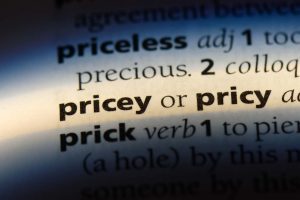
Long-term investing is a solid strategy for almost every investor. It allows for a position to grow at a stable rate due to share price appreciation and dividend growth.
Investors should focus more on investing for decades in the future, not get so wrapped up in trending securities, and focus on stocks that carry a positive reputation and offer consistent growth potential.
Below, I discuss three stocks that all offer strong potential growth in the long term, primarily due to a combination of recent share price growth and the fact that they are presently trading at a low valuation.
Costamare (CMRE)

Costamare (NYSE:CMRE), a marine transport company with a fleet of approximately 110 vessels, including container ships and dry bulk vessels, sails in front of this set of best long-term stocks.
Over the past year, its share price has increased by 76.7%, due primarily to its improved earnings growth and very robust liquidity position.
On May 10, CMRE released its earnings results for the first quarter of 2024. In these results, total revenue increased by 89% to $470 million, and adjusted net income rose by 62%, which beat analysts’ predictions regarding revenue growth by a wide margin. Costamare has a liquidity position of $1,106,000. Its new ship leasing program has allowed CMRE to fund approximately 24 shipping assets.
CMRE offers an annual dividend yield of 2.80%. Its most recent quarterly distribution was 12 cents per share, paid out to investors on May 6.
It trades at a fair valuation, with its forward P/E ratio of 5.50, while the sector average is 7.63.
Costamare is a strong buy stock due to its favorable valuation and strong earnings potential, which could greatly benefit investors in the long term.
SkyWest (SKYW)

SkyWest (NASDAQ:SKYW), a regional airline with a fleet of roughly 500 aircraft, flies high on the list of best long-term stocks. It transports cargo and passengers, provides charter services and leases aircraft.
On April 25, SkyWest reported earnings for the first quarter of 2024, stating that total revenue increased by 16%. A net loss of $22 million was reported for the first quarter of 2023, which shifted to a net income of $60 million for the first quarter of 2024.
Over the past years, its share price has doubled, and SkyWest is within an industry notorious for investor skepticism. Other airline stocks, such as American Airlines (NASDAQ:AAL) and United Airlines (NASDAQ:UAL), have reported share price declines of 39% and 12%, respectively, over this past year.
Increased travel demand during the busy summer season and airfares that have dropped by 6% compared to May last year could lead to a jump in SkyWest’s overall revenue.
SKYW also offers investors a great valuation of a forward P/E ratio of 11.99 when the median for the sector is 18.41. Even with the massive jump in share price, SkyWest still has room to grow.
Manulife Financial (MFC)

Manulife Financial (NYSE:MFC) is a company that provides a wide range of financial products, including wealth and assets management services, individual life insurance, annuity products, financial planning and causality and property insurance.
MFC reported earnings for the first quarter of 2024 on May 8, stating that total revenue increased by 16% and its core earnings per share rose by 20% from 79 cents per share to 94 cents per share.
Over the last year, its share price has increased by 45% due to increased earnings potential, especially within Asia, and its fair valuation.
MFC also offers a dividend yield of 4.23% annually, which has increased for the last 10 consecutive years. Its most recent quarterly distribution to investors was on June 19.
Manulife Financial has a low valuation, with a forward P/E of 9.80 while the sector median is 10.66.
MFC offers investors share price appreciation and dividend growth simultaneously. It is a solid long-term stock for investors, who may continue to experience impressive growth potential.
As of this writing, Noah Bolton did not hold (either directly or indirectly) any positions in the securities mentioned in this article. The opinions expressed in this article are those of the writer, subject to the InvestorPlace.com Publishing Guidelines.
On the date of publication, the responsible editor did not have (either directly or indirectly) any positions in the securities mentioned in this article.






